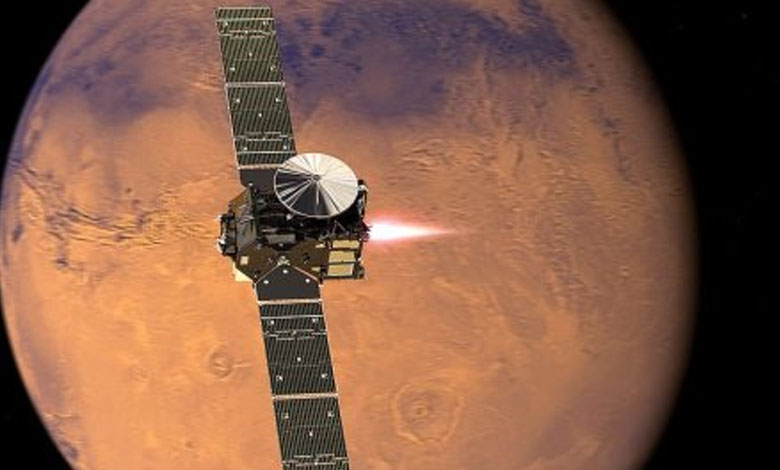Strange Structures revealed Inside Mars’ Largest Moon

The two moons that accompany Mars are amazing in more ways than one. And the structures that astronomers have just unearthed in the basement of one of them, Phobos, could help to understand their origin.
Phobos is one of the two moons of Mars. The biggest. But it remains a very small moon, compared to ours. Its largest diameter does not exceed 27 kilometers. Its surface is marked by a huge crater. It measures about nine kilometers in diameter. On the surface of Phobos, there are other craters too, and strange scratches. And that’s not to mention the fact that this small moon seems to want to inexorably approach Mars. So much so that it could end up shredding into a ring within a few tens of millions of years. So many features that have intrigued astronomers for a long time now.
And they finally had the opportunity to see it more closely thanks to the Mars Express mission, from the European Space Agency (ESA). Launched in 2003 to study the internal structure of Mars, it carried on board an instrument called Marsis – to Mars Advanced Radar for Subsurface and Ionosphere Sounding. The idea: to bombard the Red Planet with low frequency radio waves and analyze the characteristics of the waves sent back by the ground, but also by the deeper layers.
After a major update to the software of the Marsis instrument, astronomers were able to collect crucial data on the occasion of the first passage of Mars Express near Phobos. Less than 85 kilometers away. Knowing that the line that separates our atmosphere from interplanetary space is located at an altitude of some 100 kilometers, that is to say… All because “Getting closer allows us to study its structure in more detail and identify important features that we would never have been able to see from further away. In the future, we are confident that we could use Marsis within 40 km – the instrument was originally designed to study Mars at a distance of 250 kilometers. Mars Express’ orbit has been refined to get us as close to Phobos as possible in a handful of flybys between 2023 and 2025, which will give us opportunities to try.”says Andrea Cicchetti, researcher, in an ESA press release.
Asteroid or rocks torn from Mars?
What the researchers expected was that the Mars Express data could shed light on the origin of Phobos. Because astronomers are still hesitating. Mars’ moons may be ancient asteroids captured by the Red Planet. This is what their appearance and composition suggest. But not their orbit. They could therefore also, like our Moon, be pieces of rock torn from Mars by a collision.
The data taken on September 23 are rich and their analysis is still in its infancy. However, researchers have already identified in the “radargrams”, signs of more or less harmless surface structures. But also, the fainter signs of what look like far more interesting underground features. A layered structure that could indicate that Phobos is indeed an ancient asteroid. But who could also point towards a constitution in “floating pile of rubble”.
The next close passages of Mars Express in the sky of Phobos should make it possible to learn more. And the mission Martian Moons eXploration (MMX), in collaboration with the Japanese Space Agency, which should land on Phobos soon – not before 2024 anyway – to take samples should help clarify things even more. Brought back to Earth in 2029, these samples should indeed make it possible to finally solve the mystery of the origin of the moons of Mars.












